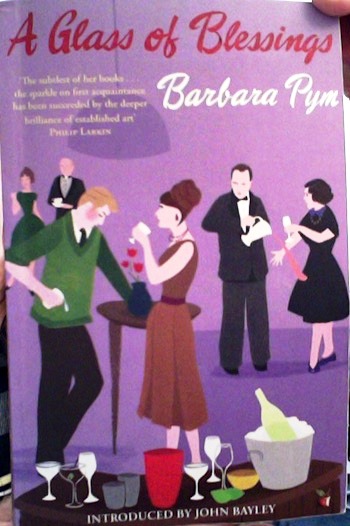Inspiring Older Readers
 posted on 13 Jun 2022
posted on 13 Jun 2022
More on Barbara Pym
When I reviewed Barbara Pym’s 1977 come-back novel, Quartet in Autumn, I felt I must read more of her work and over the past couple of years I have read four more. I found them to be patchier than I expected.
Between 1950 and 1961, Pym published six novels: Some Tame Gazelle (1950); Excellent Women (1952); Jane and Prudence (1953); Less than Angels (1955); A Glass of Blessings (1958); and No Fond Return of Love (1961). And then her publisher rejected her seventh novel and she fell silent for sixteen years. She continued to write but none of this work was published until after her death in 1980. It was a Times Literary Supplement item that resulted in her rediscovery. In 1977 the TLS asked a number of writers and public figures to name the writer they considered most under-rated. Lord David Cecil and the poet Philip Larkin both chose Barbara Pym and consequently her novel Quartet in Autumn became her bestselling work and was nominated for the Booker Prize.
The other Pym novels I have read are Excellent Women, Jane and Prudence, Less than Angels, No Fond Return of Love and A Glass of Blessings.
I found Jane and Prudence tedious and nowhere near as sparklingly funny as Pym seems to have done. Less than Angels descends almost into slapstick at times and the setting, a university anthropology department, rather rapidly becomes tiresome. No Fond Return of Love I finished but didn’t keep, finding it wooden and genuinely heavy-going. At times it felt as if even Pym found the exercise exhausting. Excellent Women (her second novel) was marvellous, exemplifying both her sly wit and wonderful attention to period detail and I would probably rank it almost as highly as Quartet in Autumn.
I thought A Glass of Blessings, her fifth novel, too long and felt it sagged somewhat towards the end, but Wilmet Forsyth, its heroine and narrator, has to be one of Pym’s finest creations. She is a woman in her early-30s who feels that the first flush of youth is past and who finds her civil service husband slightly fatter and balder than she once did. She would like romance but out of human curiosity and loneliness will settle for companionship and the fascination of human frailty and foibles. She finds all this and more in the life of the local Anglican Church, St Luke’s, which becomes the centre of her life. This emphasis on parish church affairs is intended to emphasise Wilmet’s small, circumscribed and rather empty life, but I found there to be simply too much church detail.
Philip Larkin considered A Glass of Blessings “the subtlest of all her books…the sparkle on first acquaintance has been succeeded by the deeper brilliance of established art”. I think there is some truth in this: the weaving together of dialogue and descriptive writing as part of a narrative whole is superbly done. What the book lacks, however, is genuine emotional weight, which is what she achieved with Quartet in Autumn.
I haven’t yet read The Sweet Dove Died (1978), the last novel published in her lifetime, and am resisting the urge to read the five posthumously published novels, written at various times over an almost forty year period.
While I may have satisfied my curiosity regarding Barbara Pym, this exercise has revealed her to be a more complex, more accomplished and more acerbic writer than I had initially appreciated – even if a good deal of what she wrote isn’t entirely to my taste. What I do love about her work is that the passage of time has turned her novels into wonderful time capsules of social history, and this is true of every one that I have read. It is also evident that this was not merely incidental observation: Pym seems to have been acutely aware of what would have additional resonance and social significance in years to come and focuses on the social change she sees around her.
Alun Severn
June 2022
Barbara Pym elsewhere on Letterpress:
Quartet in Autumn by Barbara Pym